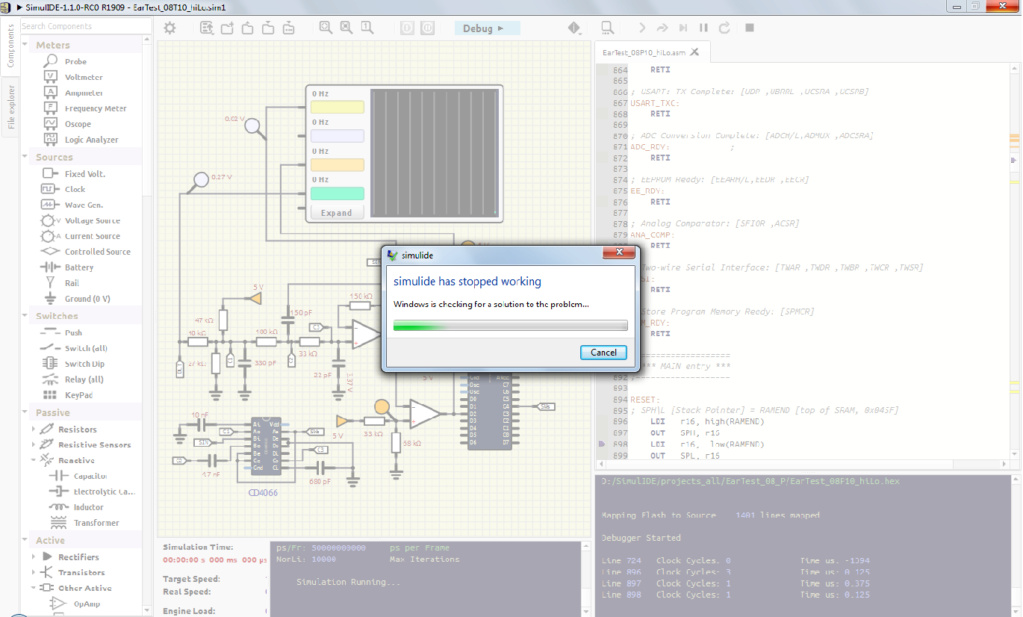Windows 7, 32
SimulIDE_1.1.0-RC0_Win32, released 20-9-2023 [SimulIDE-R1909_Win32]
I noticed, since long, on the O-scope trace of the generated sinewave a glitch. Lately, I knew it is caused by a bug in the code under test (the attached one here, ‘EarTest_08T10_hiLo.asm’).
So, I tried to debug the code, step by step, starting from its beginning (actually from line 996 or 3090) while checking the values in the MCU variables.
Unfortunately, after stepping several times a crash happens. The number of steps, before a crash, was not the same. And no matter how many times I tried, I couldn’t even reach the entry of the main algorithms (RPTtest:, jumped from line 3319). Sometimes, the crash is so severe that launching the OS security by CTRL-ALT-DEL took tens of second to appear.
Note:
The attached code here is halted at line 2440 (it is not supposed to output a sinewave). Its purpose is just to save the generated delta bit stream in SRAM into EEPROM. I had to read its entries so that I can also let LTspice plot the generated sinewave. On the LTspice trace the small glitch also appeared (seen clearly at the negative peak).

SimulIDE_1.1.0-RC0_Win32, released 20-9-2023 [SimulIDE-R1909_Win32]
I noticed, since long, on the O-scope trace of the generated sinewave a glitch. Lately, I knew it is caused by a bug in the code under test (the attached one here, ‘EarTest_08T10_hiLo.asm’).
So, I tried to debug the code, step by step, starting from its beginning (actually from line 996 or 3090) while checking the values in the MCU variables.
Unfortunately, after stepping several times a crash happens. The number of steps, before a crash, was not the same. And no matter how many times I tried, I couldn’t even reach the entry of the main algorithms (RPTtest:, jumped from line 3319). Sometimes, the crash is so severe that launching the OS security by CTRL-ALT-DEL took tens of second to appear.
Note:
The attached code here is halted at line 2440 (it is not supposed to output a sinewave). Its purpose is just to save the generated delta bit stream in SRAM into EEPROM. I had to read its entries so that I can also let LTspice plot the generated sinewave. On the LTspice trace the small glitch also appeared (seen clearly at the negative peak).

- Attachments
 EarTest_08T10_hiLo.zip
EarTest_08T10_hiLo.zip - You don't have permission to download attachments.
- (32 Kb) Downloaded 3 times
 EarTest_08T10_hiLo_lst.zip
EarTest_08T10_hiLo_lst.zip - You don't have permission to download attachments.
- (43 Kb) Downloaded 3 times

 Latest images
Latest images


 .
.